On January 1, 2019, Lakewood’s president, Ronald Gjerde, Jr. retired from his long-standing role. He will stay on as a board trustee for an additional year—to round out a full 50 years of loyal service to Lakewood! To celebrate this momentous occasion, we asked Mr. Gjerde to reminisce with us and share some of his memories.

Q: Cemeteries may appear unchanging—but you’ve seen a lot of change over these nearly 50 years. Tell us how you came to work at Lakewood.
A: I was young and in need of a job. In those days, you combed the Help Wanted section in the Tribune. I saw this ad under the heading “Office – General: Immediate opening in small congenial office w/old established firm near Henn. & Lake for young neat appearing man for general clerical office duties. Call Mr. Hatlestad or Mr. Peterson 822-2171.”
I had no idea it was a cemetery. I answered the ad and got an interview. When I arrived, I thought, ‘Wow, this is a cemetery!’ After the initial interview, I was so intrigued with the notion of working here that I was very persistent and kept calling to see if they had made a decision. I think my persistence and interest in the position went a long way toward me being hired. I still have the original ad!
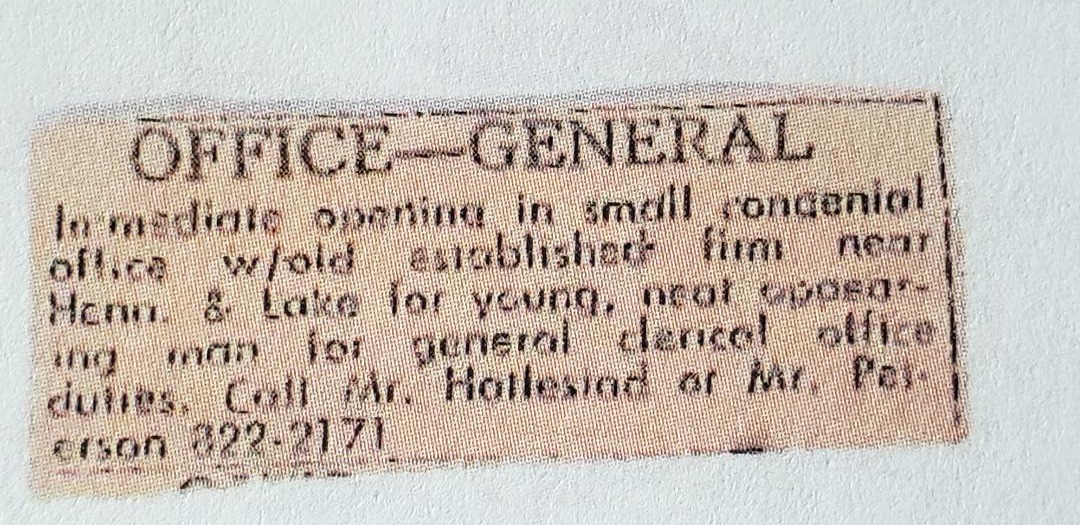
Classified ad that led to president Ron Gjerde’s first interview and job
with Lakewood in the late 1960s.
Q: Why else do you think they chose you?
A: I think they were impressed with my neat penmanship, which was important for the job because much of the record-keeping was still handwritten at the time. In my first interview, they’d asked if I’d be comfortable working in a cemetery. I remember my answer was “Well, I think so…”
Q: What were some of your first responsibilities?
A: I had to learn the cemetery—all 250 acres—every section. They even tested me on it! After that, I learned how to check gravesites before a burial. I’d go out, locate the graves for the burials that day, then meet the funeral processions at the gate and guide them to the sites. We had six to eight casket burials a day so that kept me busy. One benefit is that I got to know the funeral directors and the families well. It was rewarding work.
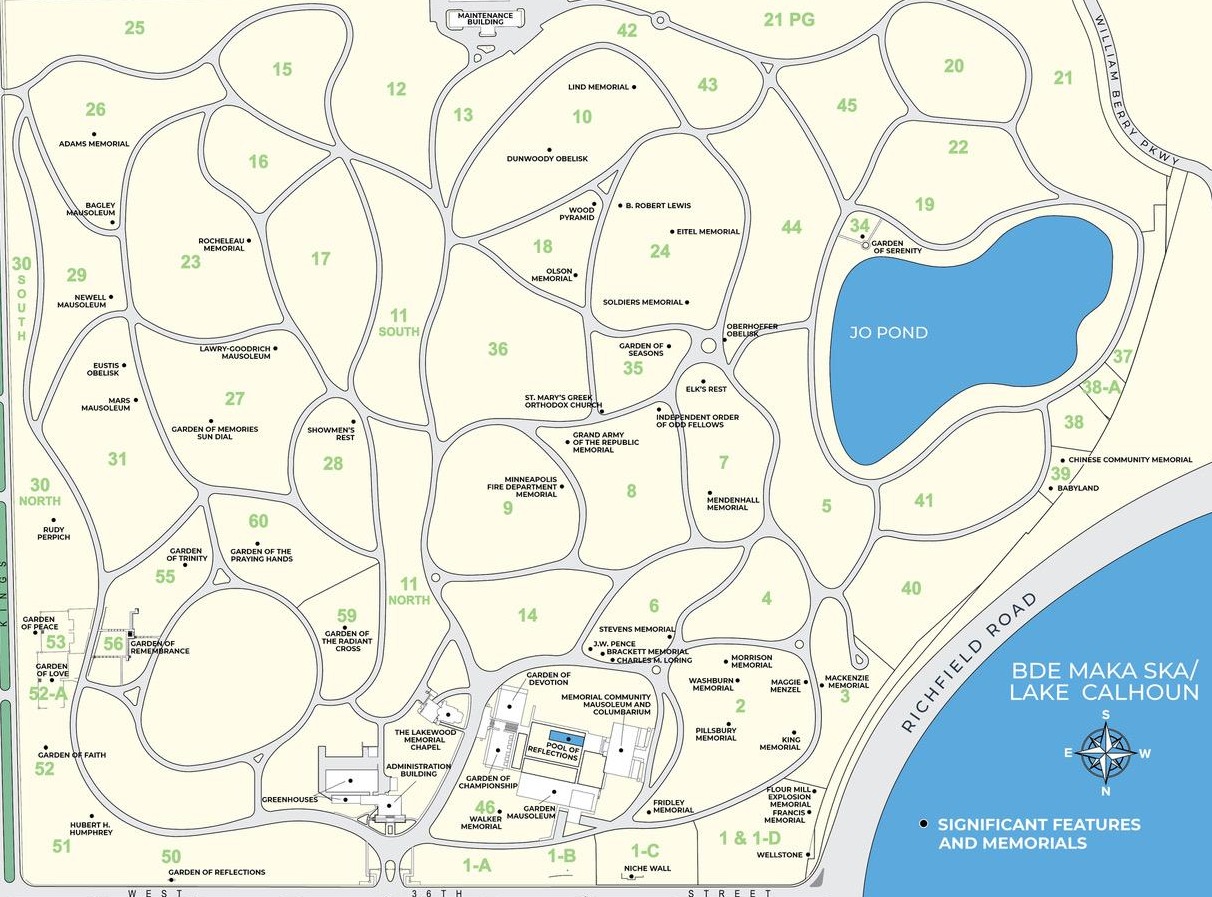
Map of Lakewood and its sections.
As I mentioned earlier, another part of my job was record keeping. Everything was either hand printed or typewritten on 3×5-inch or 8×10-inch cards. Deceased females had salmon-pink cards and males had manila cards. On those cards was a number, the name of the deceased, age, date of death or cremation, and burial place. Lot cards with all the vital statistics are the bible of the cemetery and must be accurate. Record keeping was extremely important then—and still is now.
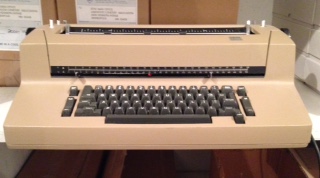
Typewriter once used for lot cards at Lakewood.
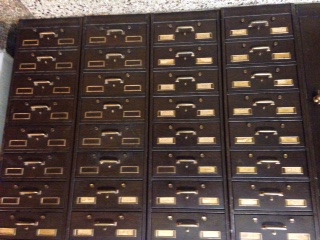
File cabinets that house lot cards at Lakewood.
My job also included completing all the necessary paperwork for cremated remains. Many people do not know that Lakewood has a crematory—and has since 1908. In my early years we had 200–300 cremations a year. Now we have 1,300–1,400 cremations annually.
Q: How has technology changed at Lakewood since you’ve been here?
A: One of the things Lakewood has done well is keep up with technology. I’ve always been something of a ‘techie,’ so I’ve enjoyed moving Lakewood into the digital age.
Our first approach to computerization was in the early 1980s with a company called Computer Design Systems. We started with a Xerox Diablo computer, transferring all interments onto 8-inch floppy disks, four or five people keying in all the data from cards, then testing the integrity of the data.
We’ve upgraded our systems several times since then, of course—it’s amazing how fast technology changes. Today, Lakewood has a mobile app that uses GPS to help families find gravesites.
Q: It’s said that you also bring a sense of humor to your work. Is that true?
A: In this business, it helps to have a sense of humor for balance. I like to include a few humorous anecdotes when I give tours of the cemetery. One example is a man, who is buried here, who stipulated in his will that he was to be left sitting upright for three days before he was buried to make sure he was truly dead! There is also the phrase “saved by the bell,” which originated from a contraption that had a bell above ground and a string attached inside the casket below ground, just in case the person was not deceased. Of course you needed someone to watch over the bell for a short period of time and thus the phrase “graveyard shift” for the designated watcher.
There are some epitaphs (sayings on headstones) that I find humorous too, such as Clyde Earl Hagen’s in 1974: “My only regrets are the temptations I have successfully resisted.”
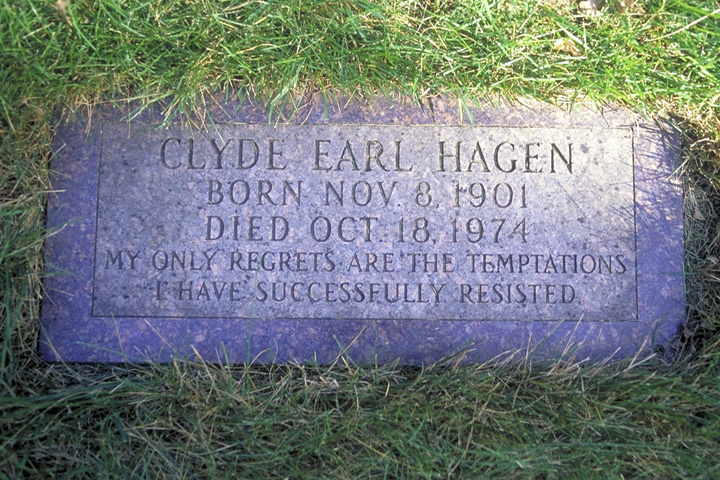
Clyde Earl Hagen’s grave marker at Lakewood.
Q: What was your path to becoming president of Lakewood?
A: In the mid-80s, our office manager decided he wanted to move to Alaska. He took me aside and said this could be an opportunity for me. David Hatlestad, the superintendent/president at the time, appointed me to the job. I was in my mid-thirties, in the first job where I’d be responsible for leading people. He sent me to the Employers Association of Minneapolis’ Leadership Training program, and one thing led to another. My job then was to assist the president.
Q: Where did you go from being office manager?
A: I was in that job until June 1989, then was named executive vice president and assistant superintendent, the successor to the current president. Six months later at the annual meeting in December, I was named president.
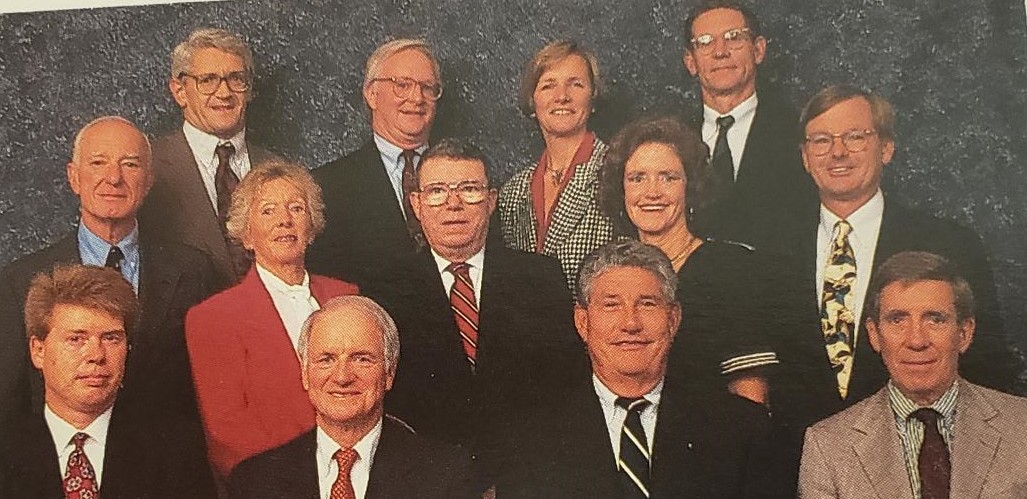
The Lakewood Board of Trustees, early 1990s. Ron Gjerde is pictured in the front row, farthest left. Source: Haven in the Heart of the City: The History of Lakewood Cemetery
Q: What are you most proud of in your time as president?
A: The Lakewood Garden Mausoleum and Reception Center is at the top of my list. When we started the project, neither the board of trustees nor I really imagined it would become as beautiful and architecturally significant as it is. We decided to build a new mausoleum because Lakewood’s only other mausoleum at the time, the Community Mausoleum, was near capacity and we needed more niches for urns to accommodate the shift toward cremation. This is Lakewood’s future.
We chose a local firm, HGA, and two of its architects, Joan Sorrano and John Cook, as well as the firm Mortenson as the general contractor, to assist us in achieving our vision. We broke ground in 2009 and completed the building in two and a half years. It has won numerous awards for its design. We’re all very proud of it.
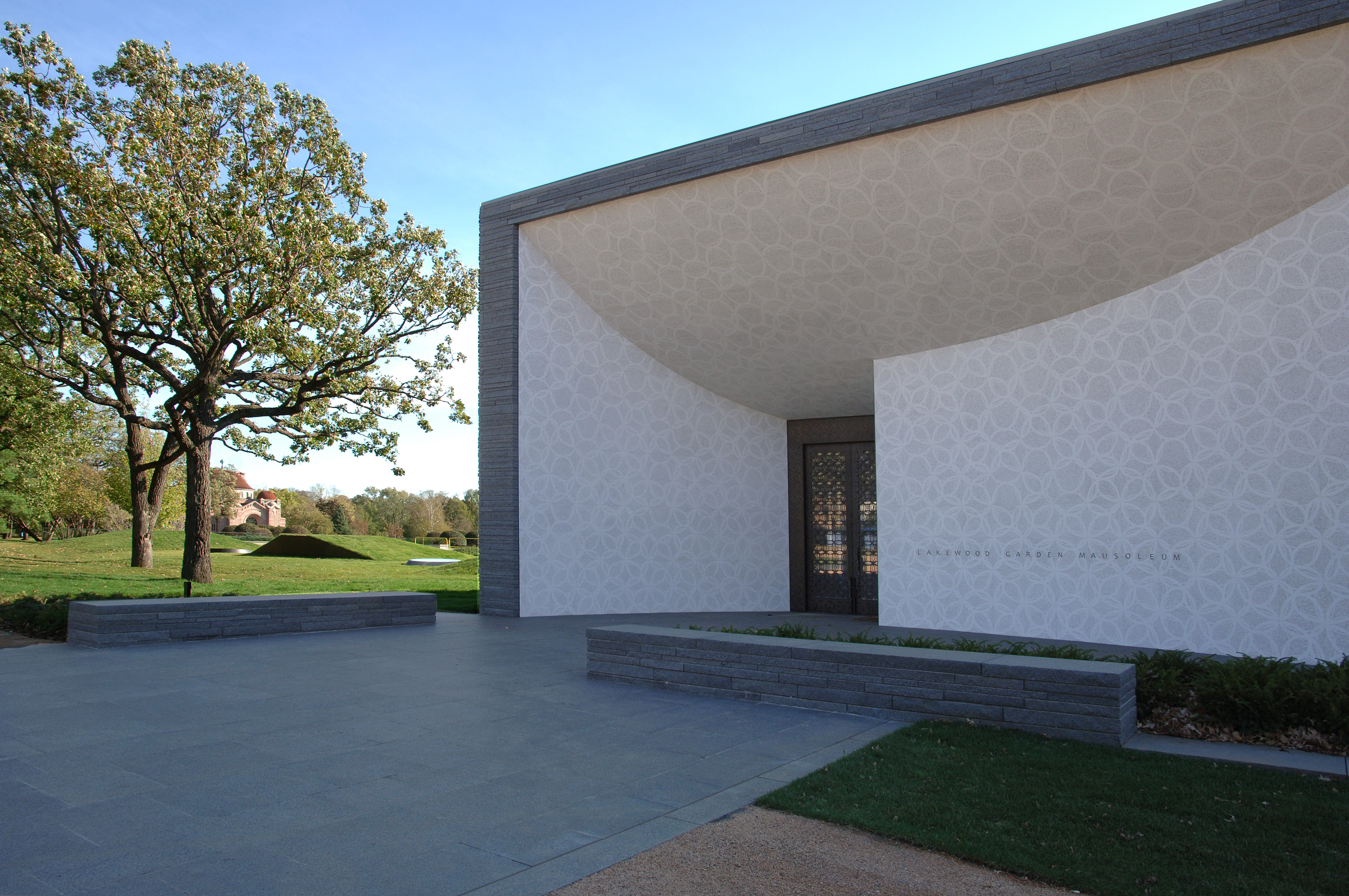
The Lakewood Garden Mausoleum and Reception Center, completed in late 2011.
Source: Tom Henry Photography
Q: What challenges did you give the architects and the builders?
A: We asked the architects to work with landscape architects Halvorson Design to make sure the building harmonized with the surrounding landscape. The green roof makes that possible. About two-thirds of the building is below ground, but surprisingly, with the oculi (skylights), hardly any artificial light is needed during the day. It’s a beautiful building. I look on the Garden Mausoleum as my legacy.
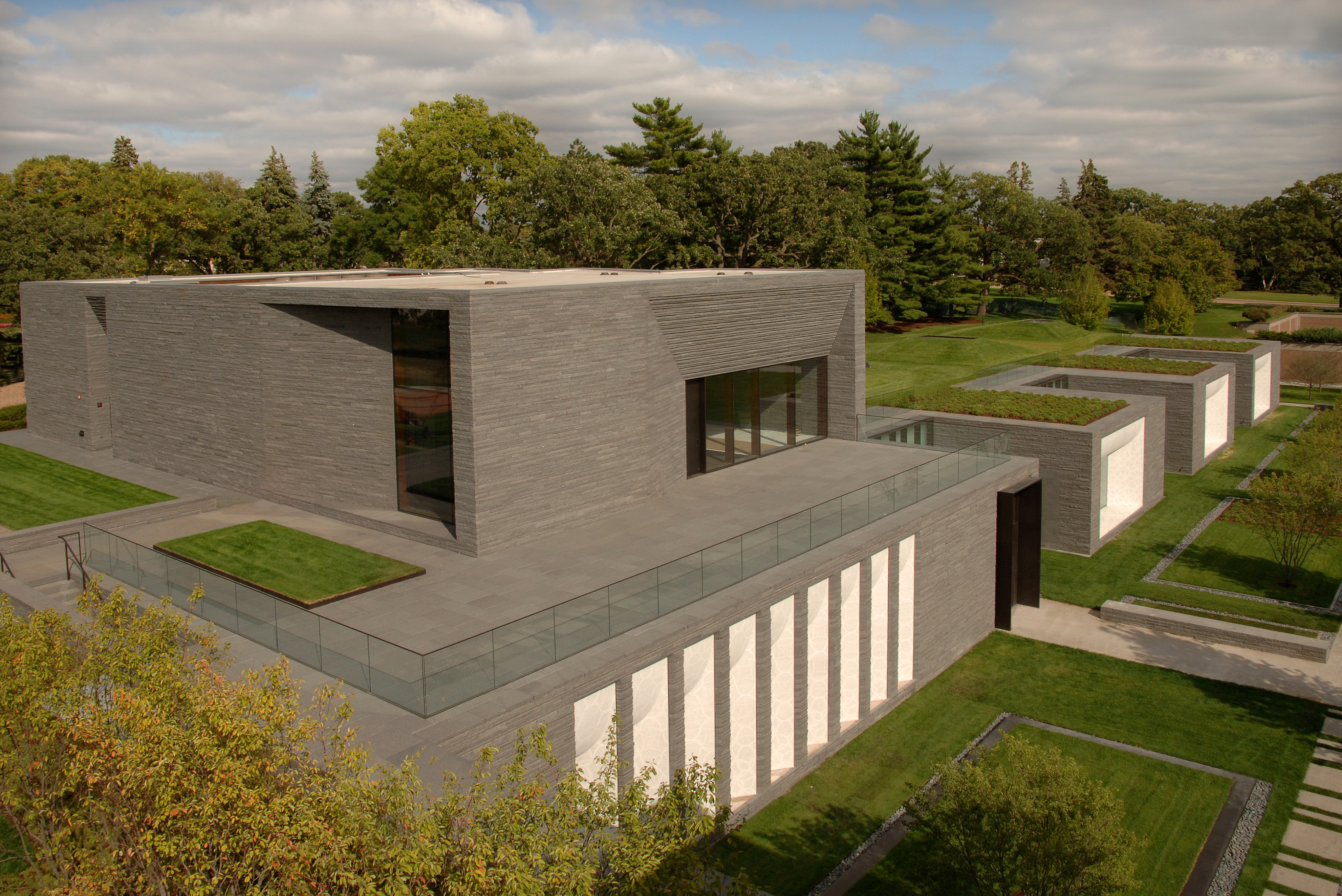
The Lakewood Garden Mausoleum was built into a previously-undeveloped hill at Lakewood, blending with the natural landscape.
Q: Other notable projects?
A: Early on in my term as president, we renovated the Administration Building, which was designed in 1929 by Ernest Kennedy. Nothing had been changed in that building—even the desks were the same. We enlisted architect Jim Miller to change the décor without altering the integrity of the building. We completely revamped the outer office, adding cubicles with glass so people working in them could see around the room. We also remodeled the offices in the lower level to make them more welcoming for families making burial or cremation arrangements. It’s already been 25 years since that renovation and it’s time to take another look at the space. Our challenge is to preserve the historical architecture that makes Lakewood so distinctive, but also ensure the space is comfortable for families and employees.
The renovation of the 1910 Lakewood Memorial Chapel in 1996-1997 was also a major project during my tenure. We chose Jim Miller again to work on the chapel interior and the cremation area in the lower level, including adding a reception area for families there. We brought the building into the modern age in terms of lighting and air conditioning, but again, we stayed true to the historic integrity. Elements of the interior were restored with cleaning and we added touches consistent with the original design.
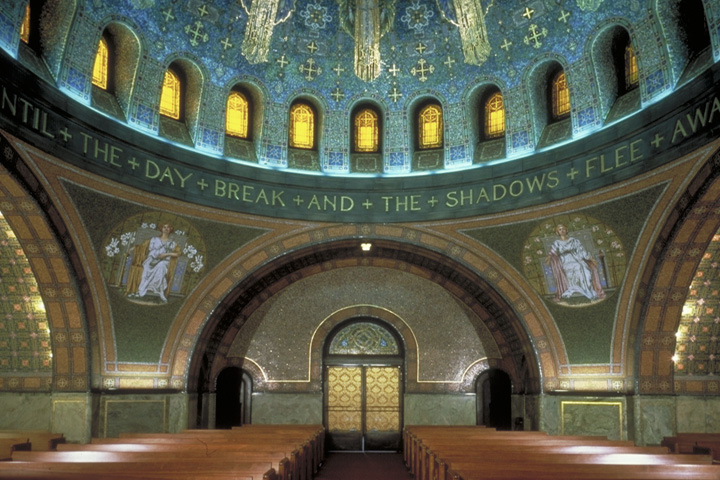
The Lakewood Chapel before the mid-1990s renovation.
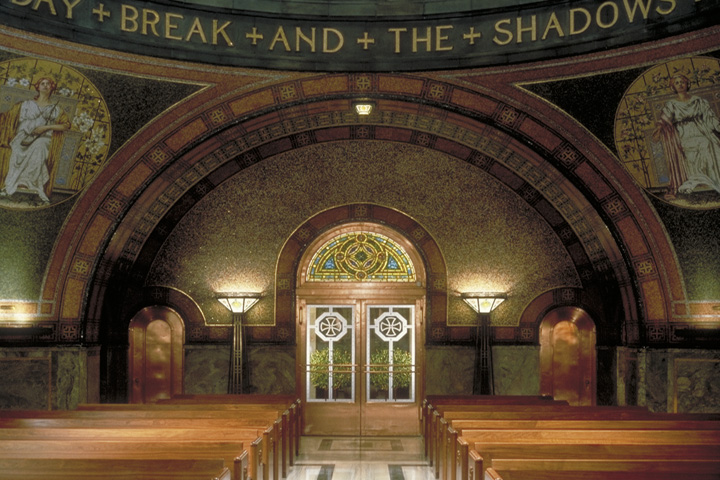
The Lakewood Chapel after the renovation, 1997.
Q: You were instrumental in publishing a book about Lakewood’s history for its 125th anniversary. How did that come about?
A: The book was another of my first big projects. Henry Kingman was a trustee at the time, and he believed it was an important thing to do. Haven in the Heart of the City: The History of Lakewood Cemetery was published in 1992 and is still used as a reference guide and a gift to families.
Q: What else has Lakewood done to connect with families – and the general public?
A: A few years after the book was published, we decided to re-imagine Memorial Day at Lakewood, which is a very popular day to visit the cemetery. At first, it was to celebrate Lakewood’s 125th anniversary, but the event was so popular, we have continued it ever since. In fact, we’ve expanded events at Lakewood quite a lot in the past few years, and both families and the community seem to enjoy it. We do tours of the cemetery, concerts in our Chapel and more—all open to the public.
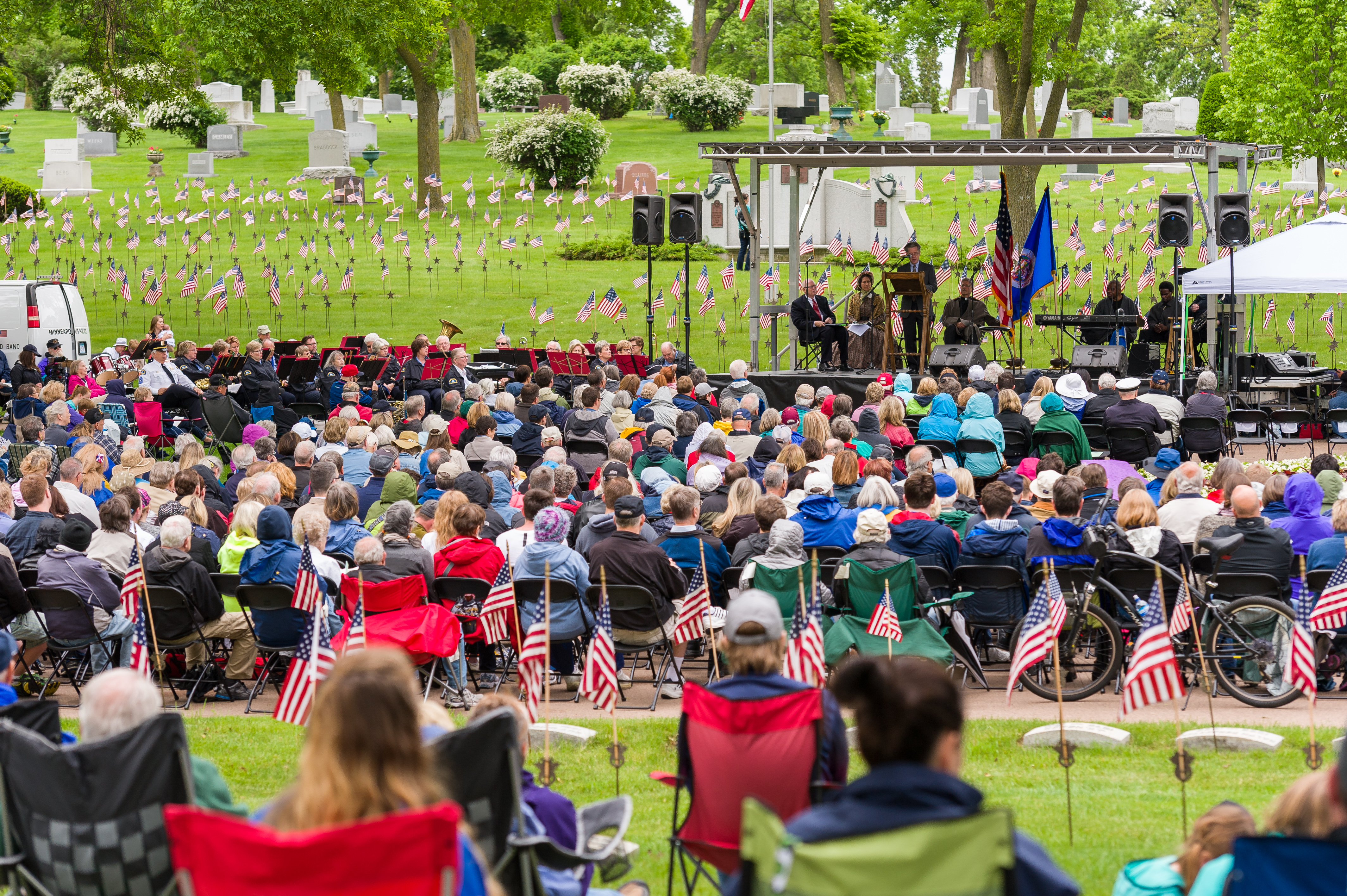
Annual Memorial Day ceremony at Lakewood.
In 2015, we began holding our annual Lantern Lighting Celebration in September. I’d read about another cemetery having a similar event and thought it would be ideal for Lakewood because we have a lake. We had about 350 attendees the first year—now we have three to four times that number.
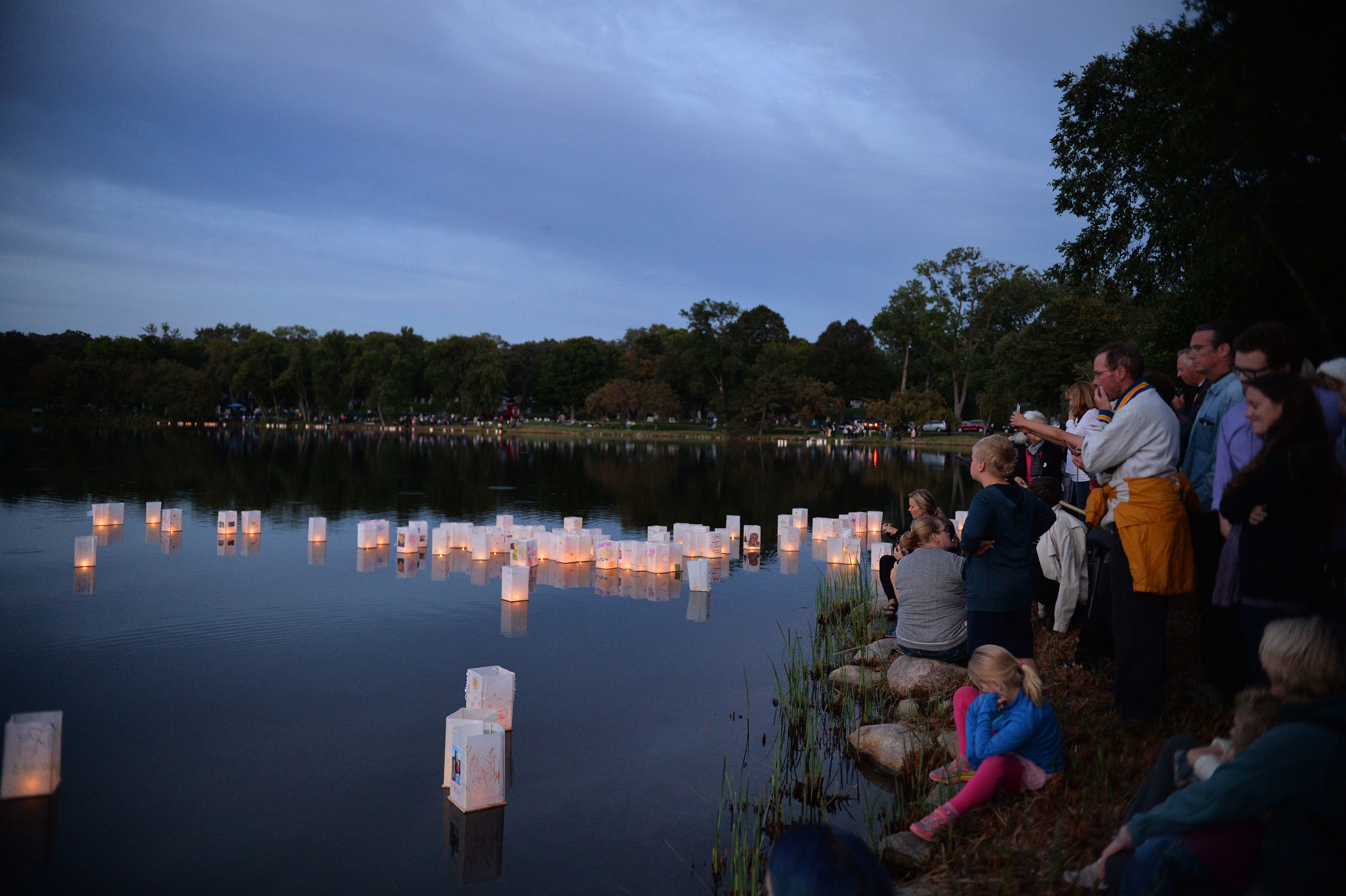
Annual Lantern Lighting Ceremony at Lakewood, where individually decorated, candlelit lanterns are released on to Lakewood’s lake in memory of loved ones.
Events have become an important part of what Lakewood offers; they allow us to share Lakewood’s treasures, and even more importantly, they make the concept of memorialization more accessible and inviting. In just a few years, it’ll be Lakewood’s 150th anniversary. I’m sure there’ll be a wonderful celebration—stay tuned for that!
Q: Tell me about a major challenge during your time at Lakewood.
A: Certainly the summer storms of 1979 and 1981 qualify. We lost and had to replace hundreds of trees. Lakewood has always had a generous tree canopy. It’s part of what people love about this place. Of course, we’d rather maintain that on purpose rather than have Mother Nature do it for us. But we managed.
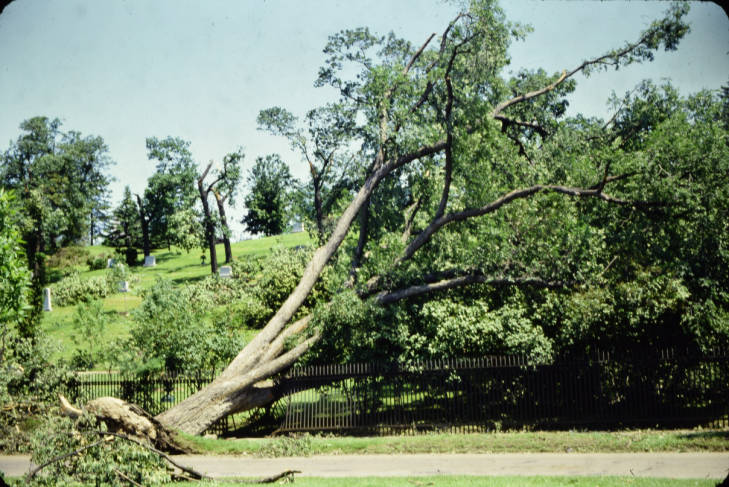
An uprooted tree from the 1981 storm that had crashed through Lakewood’s fence.
Source: Hennepin County Library
Q: Quite a few well-known people chose to be buried at Lakewood. What has been the most memorable burial during your years with the cemetery?
A: I have to say Hubert Humphrey’s, because of who he was – former mayor, senator, vice president. The burial lot hadn’t been chosen before he died, so that had to be done quickly. Dave Hatlestad was in charge of the arrangements and managing the burial and I assisted him. The day of the funeral was bitterly cold and we both came down with colds afterward. There were hundreds of people, but not as many as it might have been if the Secret Service hadn’t limited attendance for security reasons.
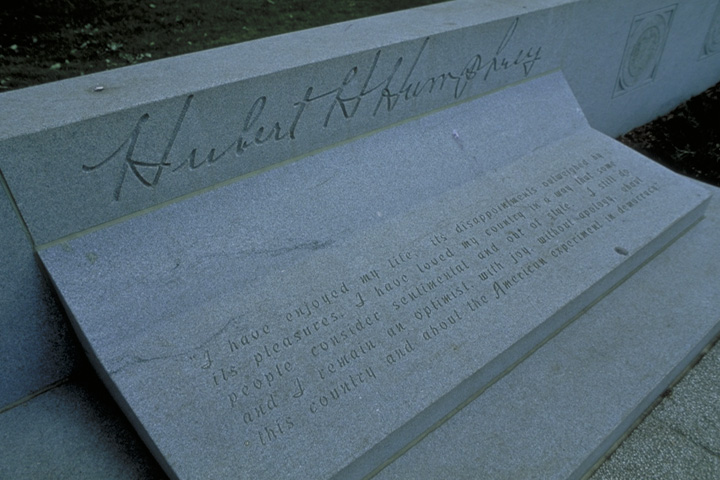
Hubert Humphrey memorial at Lakewood.
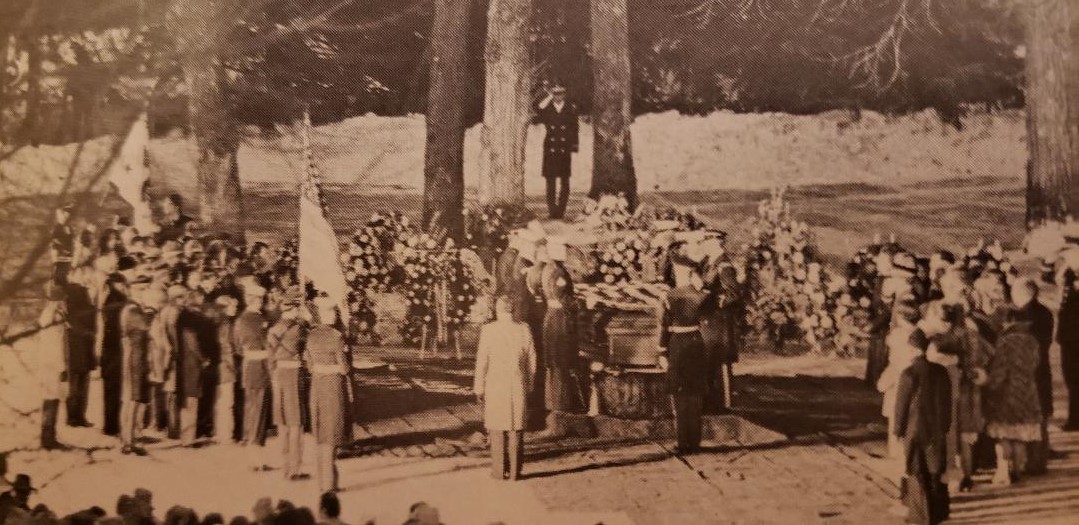
Hubert Humphrey funeral held at Lakewood.
Source: Journal of the American Cemetery Association.
Q What was the biggest crowd ever for a burial service?
A: That burial occurred before my time. It was Floyd B. Olson, a very popular governor, in August of 1936. He was only 44 years old and at the height of his popularity. Cars were parked on eight miles of roadway in all directions and two railroad boxcars of flowers were sent to be placed around the grave.
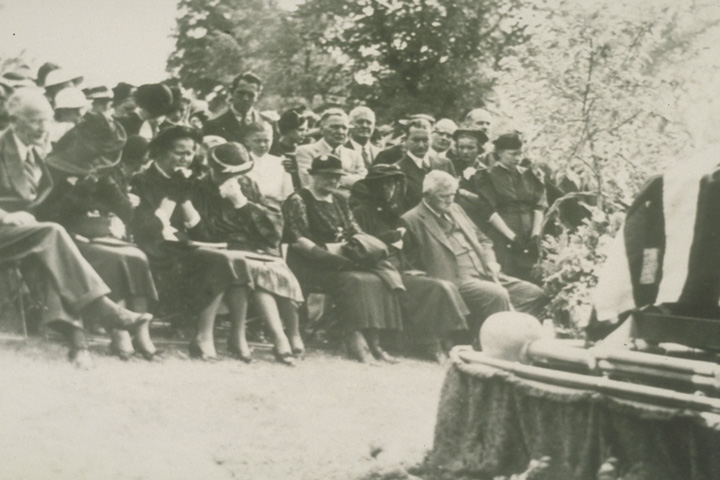
Minnesota Governor Floyd B. Olson’s funeral at Lakewood, 1936.
Source: Minnesota Historical Society
Q: Do you have a favorite monument at Lakewood?
A: Probably my favorite is the monument to Scottish immigrant Joseph Kerr. He was born in Scotland in 1760, came to America and served in the War for Independence at age 17. He also fought in the War of 1812 at age 52! The monument is a cenotaph, meaning his remains are not actually buried here. I like this monument because it is the only direct reference in our cemetery to the Revolutionary War.
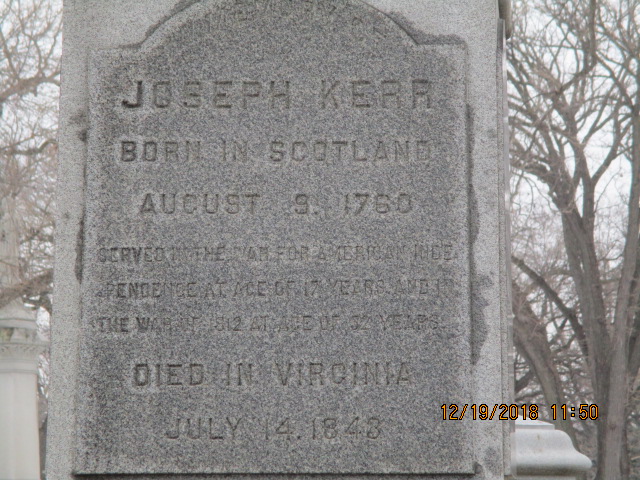
Kerr family monument at Lakewood.
The Fridley monument is another of my favorites.
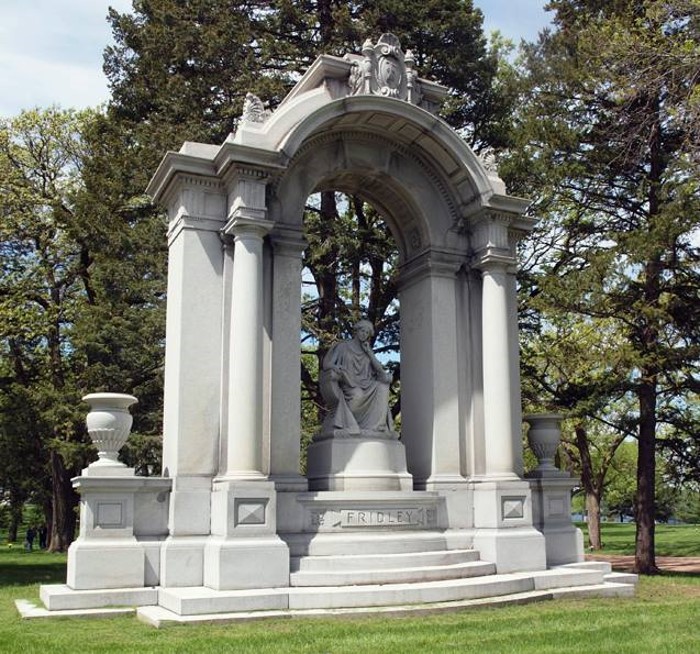
Fridley monument at Lakewood.
Q: Many people wonder if you have to deal with vandalism. How do you protect against people intending to have fun by doing damage in a cemetery?
A: First I’m happy to say that we have had no major vandalism since the 1980s. We have round-the-clock security that is very diligent, as well as other security measures in place to protect the cemetery.
Q: Lakewood seems to be becoming more direct about marketing efforts. What’s behind that?
A: With the increase in cremation, many people don’t think about what will happen with their loved one’s remains in the years to come. It’s up to us to remind them there’s another step in the process to consider—and that’s permanent memorialization. Cemeteries are important in this regard for two reasons: one, they provide an actual place that people can visit time after time to remember, and two, cemeteries like ours keep accurate records of every person buried here. Plus, we have two places – the Tree of Remembrance in the Community Mausoleum and the Wall of Remembrance in the Garden Mausoleum—where names of individuals not buried here are written, and their information is included in the cemetery’s records.
In addition to the rise in cremation, there’s a shift happening in how our society views death and dying. It’s not just a medical event anymore. It’s part of one’s life journey. Lakewood believes we can help facilitate learning and discussions around some of these end-of-life topics to help families understand their options.
Q: What’s next for Lakewood?
A: Lakewood will continue to be a strong community presence and resource for many, many years to come. Lakewood’s incoming president, Chris Makowske, has been working with us since 2009. It’s been a carefully planned leadership transition guided by our overseeing board of trustees—and I expect Lakewood will continue its tradition of excellence with Chris at the helm.
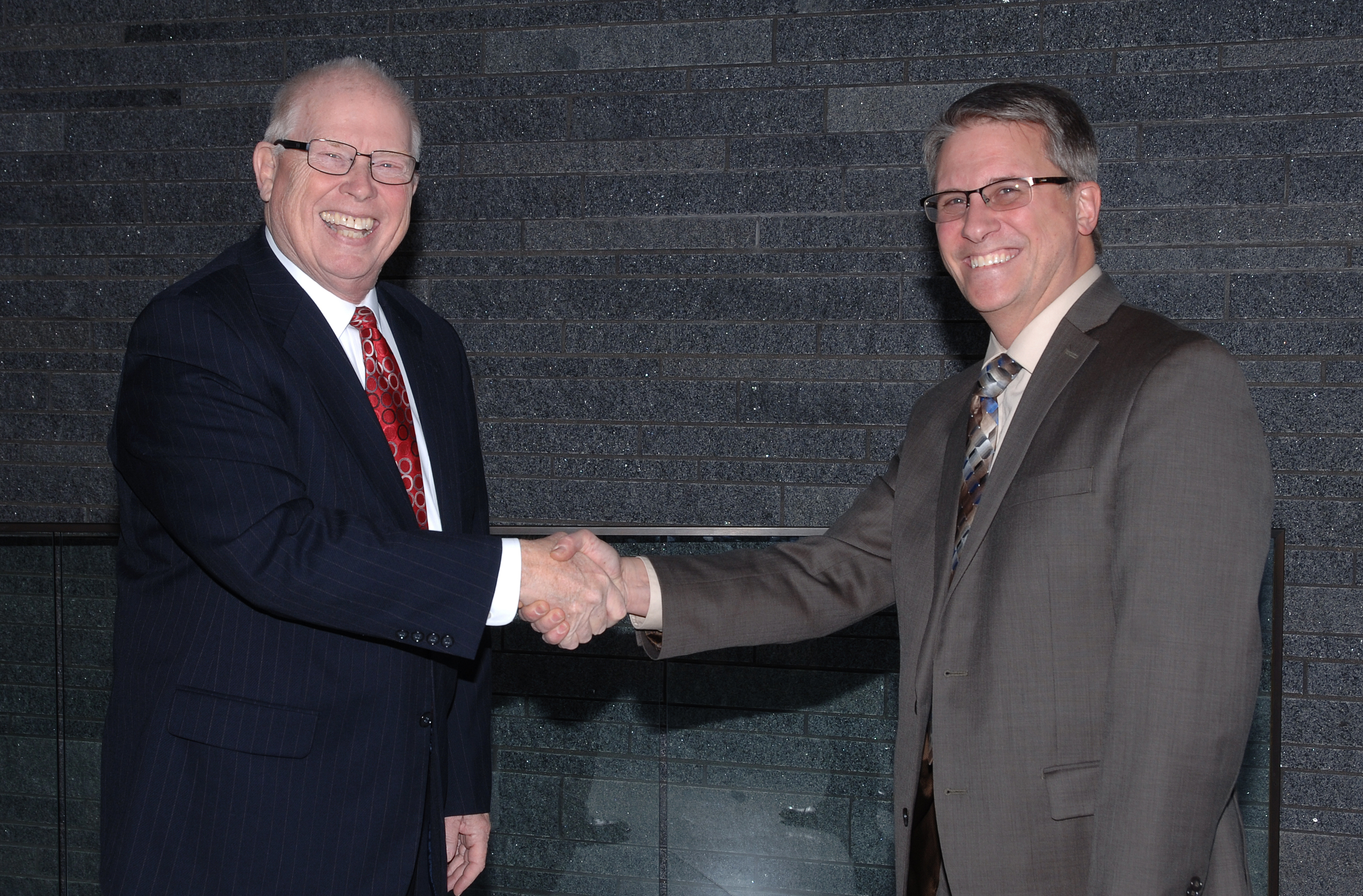
Ron Gjerde (left) with incoming president Chris Makowske (right), December 2018.
Q: What’s next for you?
A: I’ll be on the Lakewood Board of Trustees for the next year and continue with the Minnesota Association of Cemeteries for a two-year term. It’s important for Lakewood to stay involved both in Minnesota and nationally. We need to continue making cemeteries relevant to people’s lives, reminding them to leave their legacy and memory in a place where future generations can say, ‘yes, you were here.’
Q: What’s been the most satisfying part of your time here?
A: I have to say it’s knowing the wonderful people who work here now and in the past. We have a really great board of trustees who set the direction, and we have the right people to carry it out. It’s about all of us, working together to serve families when they need and deserve the best we can give.
Congratulations on your retirement as president, Ron. Lakewood thanks you for your many years of service, your sustained leadership and your legacy of contributions.